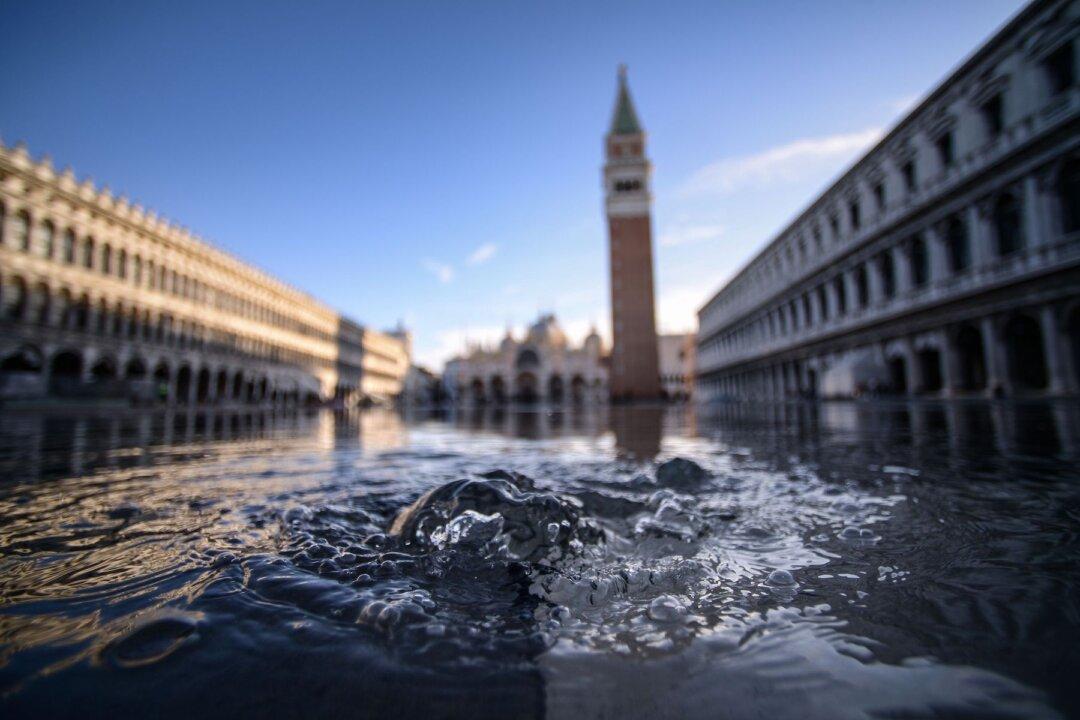Italy on Thursday declared a state of emergency for Venice after severe storms coinciding with a high tide on Nov. 12 caused extensive flooding in the lagoon city, with waters entering the St. Mark’s Basilica and submerging town squares.
A cabinet meeting approved a special decree that included 20 million euros ($21.7 million) in immediate financial aid aimed at helping the city recover.




